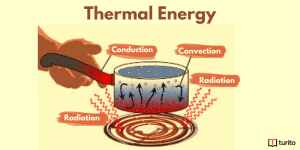Radio Waves
Radio Waves are one wave having the longest wavelength in the electromagnetic spectrum. They are a form of electromagnetic radiation with a frequency of 300Hz to 3Hz. The wavelength at 300 GHz is 1mm, and that at 3kHz is 100 km.
Just like all other electromagnetic waves, radio waves propagate with light speed. All the radio waves that occur naturally are made from lightning or astronomical objects. Artificially prepared radio waves frequency are employed in radars, radio communication, computer networks, navigation systems, broadcasting, and several other applications.
What are Radio Waves?
Generally, Bose radio waves are created by radio transmitters and are received by radio receivers. Radio waves frequency of different frequencies in the atmosphere exhibit different characteristics of propagation. The long waves undergo diffraction when they meet obstacles, whereas the short waves get reflected by the ionosphere and get back above the sky waves’ horizon. Both waves’ propagation distance is limited to the horizon of vision as short waves diffract or bend a little and propagate in a line of sight.
Propagation of Radio Waves
The electromagnetism study includes polarization, refraction, reflection, refraction, diffraction, and absorption. All of these processes are important for studying how radio waves propagate in space and over the surface of the Earth.
The Wavelength, Frequency, and Speed
The speed of radio waves is the same as that of the speed of light, and they slow down depending on the permittivity of the object they are passing through.
The wavelength of a radio wave can be defined as the distance between one peak of the electric field of a wave to the other. It is inversely proportional to the frequency of the radio wave examples.
Radio Communication
Signals are received from FM or AM radio stations because of the radio antenna. This antenna picks up many radio signals, and a radio tuner is needed to tune to a specific signal. This is all possible with the help of a resonator or an inductor, a crystal oscillator or a circuit with a capacitor. Proper configuration of the resonator is done to resonate a frequency. This helps the tuner in the amplification of sine waves at a radio wave frequency while avoiding other sine waves.
Discovery
The unified theory of electromagnetism was given in the 1870s by James Clerk Maxwell, a Scottish physicist. According to Scotland’s National Library, he predicted that radio waves would exist. Heinrich Hertz 1886 applied the theories of Maxwell to the creation and reception of radio waves. Hertz employed simple handmade devices like a Leyden jar with foil layers and an induction coil to produce electromagnetic waves.
The first person to receive and transmit controlled radio waves was Hertz. Hertz is the frequency unit of an electromagnetic wave, one cycle per second. The name was kept in honor of the physicist by the American Association for Science Advancement.
Low to Medium Frequencies
ELF radio waves have the lowest radio frequency and a long range. They can penetrate rock and water for communication inside caves and mines and with submarines. According to the Stanford VLF group, lightning is the most powerful natural source of ELF waves. The waves that result from lightning strikes tend to bounce back and forth between the ionosphere and the Earth. Radio signals traveling to satellites can be distorted because of these lightning disturbances.
MF and LF bands of radiation include aviation and marine radio as well as commercial amplitude modulation ratio. The range of AM radio frequency is between 535 kilohertz and 1.7 megahertz. AM radio possesses a long-range, especially at night when the ionosphere can better refract the waves back to Earth, but there can be interferences affecting the quality of sound. If there is a partial block in a signal, for example, because of a tall building like a skyscraper, the sound volume is decreased accordingly.
Higher Frequencies
VHF, HF, and UHF bands include broadcast television sounds, FM radio, cell phones, public service radio and global positioning systems. These bands typically use frequency modulation to impress or encode data or an audio signal onto the carrier wave. The amplitude of the signal remains constant in frequency modulation, whereas the frequency varies lower or higher at a magnitude and rate corresponding to the data signal or audio.
FM has a better quality of signal as compared to AM as the environmental factors do not influence the frequency as much as they affect amplitude. The receiver ignores variations in amplitude as long as the signal is more than a minimum threshold level. The range of FM radio frequencies is between 88 megahertz and 108 megahertz.
Shortwave Radio Waves
According to the National Association of Shortwave Broadcasters (NASB), frequencies in the HF band ranging between 1.7 megahertz and 30 megahertz are used by shortwave radio. The shortwave spectrum radio wave examples are divided into several segments within that range, some of which are dedicated to regular broadcasting stations like the British Broadcasting Corporation, the Voice of America, and the Voice of Russia.
According to the NASB, there are hundreds of shortwave stations throughout the world, which can be heard from thousands of miles away. This is because these signals bounce back from the ionosphere and rebound thousands of miles from where they originate.
Radio Emissions in the Solar System
Radio waves are produced by astronomical objects having a magnetic field that alters. A day of bursts of radio waves was recorded by the instrument used in radio astronomy called WAVES on the spacecraft WIND from the corona of the Sun and the planets in the solar system.
Radio Telescopes
By looking toward heaven, radio telescopes can be employed to view planets, huge clouds of dust and gas, comets, galaxies, and stars. Astronomers can learn about their structure, composition, and motion by observing the radio waves starting from these sources. The advantage of radio astronomy is that the observations are not affected by clouds, sunlight, and rain.
Since optical waves are generally shorter than radio waves, radio telescopes are manufactured differently than those used for visible light. They must be physically larger than an optical telescope so that images of comparable resolution are obtained. However, we can cut millions of small holes through the dish to make them lighter as radio waves are too big to see. The Parkers radio telescope has a 64-meter wide dish, but it cannot yield an image of a better resolution than a small backyard optical telescope!
A Very Large Telescope
To attain clearer radio images with better resolution, several smaller telescopes are often combined by radio astronomers into an array. These dishes together tend to act as one large telescope whose resolution depends upon the maximum size of the area. The Very Large Array Telescope of the National Radio Astronomy in New Mexico is one of the premier astronomical radio observatories in the world. The VLA has 27 antennas arranged in the shape of a Y spread up to 36 km across.
The techniques used at long wavelengths in radio astronomy can sometimes be applied at the radio spectrum’s shorter end, that is, the microwave portion.
The Radio Sky
If we tune a telescope to 408 MHz and look at the sky with a radio telescope, it would appear radically different from what it looks like in visible light. Instead of star-like points, distant pulsars will be seen along with regions with star formation. Also, the night sky would be dominated by supernova remnants.
Quasars can also be detected by radio telescopes. This term is a short form for quasi-stellar radio sources. This name is derived from the fact that the quasars identified first emit radio energy mostly and appear a lot like stars. Quasars are quite energetic; some of them even emit 1,000 times as much energy as the whole Milky Way. But the view of most quasars from the visible light is blocked by the dust in the galaxies surrounding them.
The quasars were identified by astronomers with the help of radio data derived from the VLA radio telescope, as many galaxies that have quasars look bright when observed with a radio telescope.
Conclusion
To summarize, Bose radio waves are those waves in the electromagnetic spectrum that have the longest wavelength. These waves are a type of electromagnetic radiation that has a frequency from as low as 3kHz to as high as 300 GHz some frequency of 3 GHz and above is defined as microwaves. The frequency is 300 GHz at a wavelength equal to 1 mm and 3 kHz at 100 km.
Frequently Asked Questions
1. Why can photons travel at the speed of light while other particles cannot?
Photons do not have mass. So, they can travel at the speed of light while other particles can not.
2. What is the property of an electromagnetic wave that depends on the medium it travels in?
The velocity of an electromagnetic wave is a property that depends on the medium it travels in.
3. What are some properties of electromagnetic waves?
Below are some properties of electromagnetic waves:
- Electromagnetic waves propagate at the speed of light.
- A medium is not required for the propagation of these waves.
- These waves can be polarized and undergo diffraction and interference.

Relevant Articles
Understanding Thermal Energy: What It Is and How It Works
Thermal energy is essential to our daily lives, from warming …
Understanding Thermal Energy: What It Is and How It Works Read More »
Read More >>Avogadro’s Number: Meaning, Importance, and More
Introduction The concept of measuring the microscopic particles that make …
Avogadro’s Number: Meaning, Importance, and More Read More »
Read More >>Kinetic Friction – Definition, Laws, Types
Kinetic Friction Kinetic force is a force acting between two …
Kinetic Friction – Definition, Laws, Types Read More »
Read More >>




















Comments: